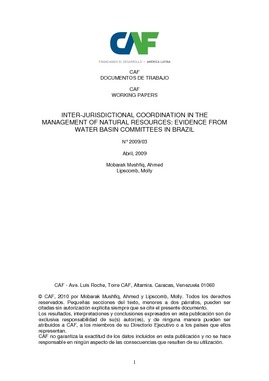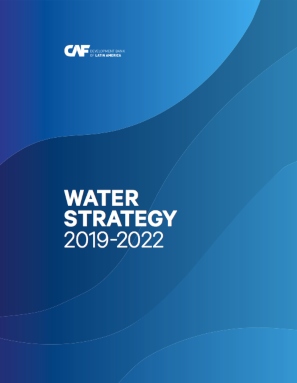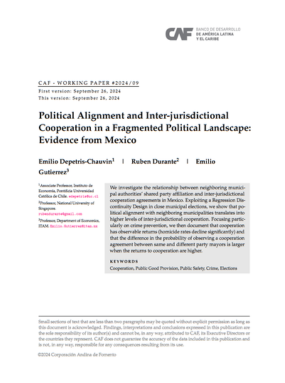Mostrar el registro sencillo del ítem
Inter-jurisdictional coordination in the management of natural resources: evidence from water basin committees in Brazil
| dc.contributor.author | Mobarak Mushfiq, Ahmed | es |
| dc.contributor.author | Lipscomb, Molly | es |
| dc.coverage.spatial | Brasil | es |
| dc.date.accessioned | 2014-10-15T20:04:10Z | |
| dc.date.available | 2014-10-15T20:04:10Z | |
| dc.date.issued | 2009 | es |
| dc.identifier.citation | Mobarak Mushfiq, A., & Lipscomb, M. (2009). Inter-jurisdictional coordination in the management of natural resources: evidence from water basin committees in Brazil. CAF Working paper, 2009/03, Caracas: CAF. Retrieved from https://scioteca.caf.com/handle/123456789/196 | en_GB |
| dc.identifier.uri | https://scioteca.caf.com/handle/123456789/196 | |
| dc.description.tableofcontents | Decentralized management of public goods creates the potential for spillovers across jurisdictions. These spillovers may be particularly large in the case of river management where the river has little value to upstream constituents once it has left the jurisdiction. Cross border cooperation in management of public goods can reduce spillovers, but negotiation between jurisdictions can be difficult to achieve. This paper estimates the effectiveness of policy interventions designed to increase the potential for coordination and negotiation between jurisdictions and investigates the mechanisms through which water management committees and other forums designed to enable cooperation between jurisdictions may improve cross border cooperation. We develop a simple theoretical model, based on a two stage bargaining game, in which we analyze negotiation between jurisdictions. We arrive at several key theoretical predictions: 1) Pollution levels between jurisdictions decrease following the institution of water basin committees, 2) These reductions in pollution loads are largest in the downstream areas of the river, and 3) Political affiliation and other factors which reduce transactions costs between counties also lead to larger negotiated pollution reductions by the upstream county. We find that overall; water basin management committees have a mixed impact on water quality. Organic pollution loads appear to decrease with the institution of water basin committees, but the overall health of the river as measured by dissolved oxygen content appears to be relatively unaffected by the institution of water basin committees. Consistent with the model, we find that the impact of water basin committees is largest in the downstream portion of the river where information asymmetries about the origin of the pollution are largest. We also find that increases in political cohesion between the upstream and downstream counties lead to decreases in organic pollution loads between the upstream and downstream counties. These decreases in pollution arising from decreased costs of negotiation between local leaders appear to be largest when combined with dedicated forums for negotiation between the counties. | en |
| dc.language.iso | eng | es |
| dc.publisher | CAF | es |
| dc.relation.ispartofseries | CAF Working paper, 2009/03 | es |
| dc.rights | CC-BY-NC | es_ES |
| dc.rights.uri | http://creativecommons.org/licenses/by-nc/4.0/ | es_ES |
| dc.subject | Agua y saneamiento | es |
| dc.subject | Ambiente | es |
| dc.subject | Investigación socioeconómica | es |
| dc.subject | Recursos naturales | es |
| dc.subject | Gobernabilidad | es |
| dc.title | Inter-jurisdictional coordination in the management of natural resources: evidence from water basin committees in Brazil | es |
| dc.type | workingPaper | es |
| dc.publisher.city | Caracas | es |
Ficheros en el ítem
Este ítem aparece en la(s) siguiente(s) colección(ones)
-
6.1 Documentos de trabajo en investigación socioeconómica
En esta colección se encuentran los documentos de trabajo sobre temas económicos y sociales prioritarios para la región.






